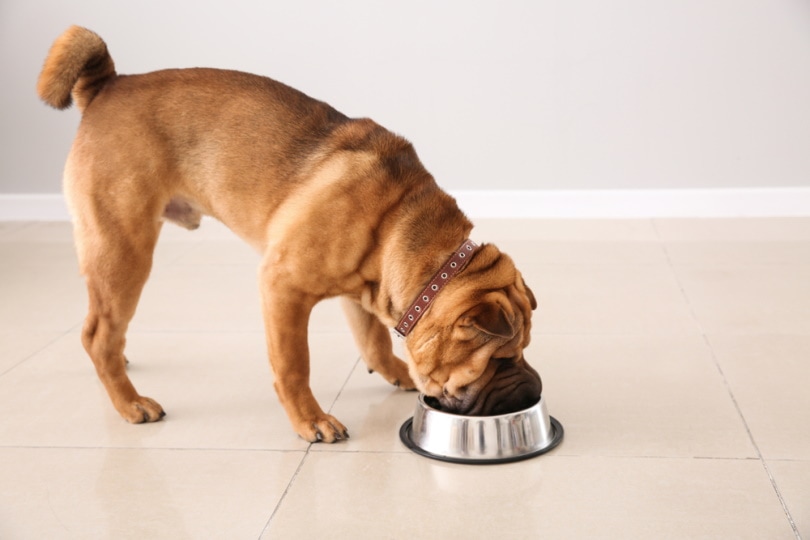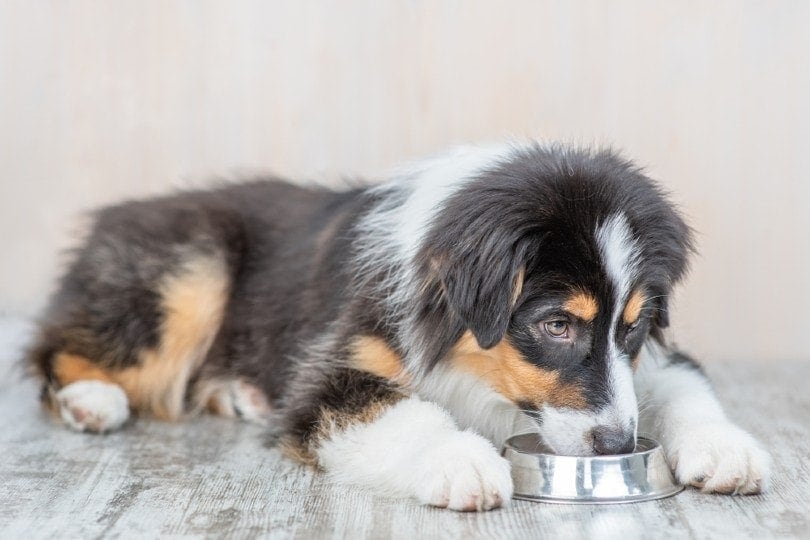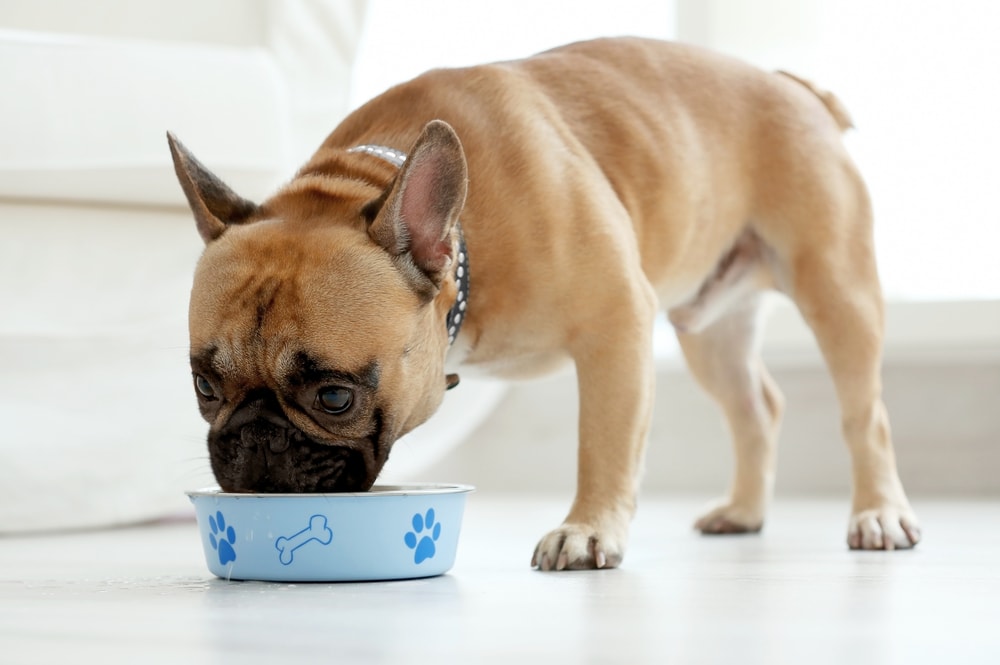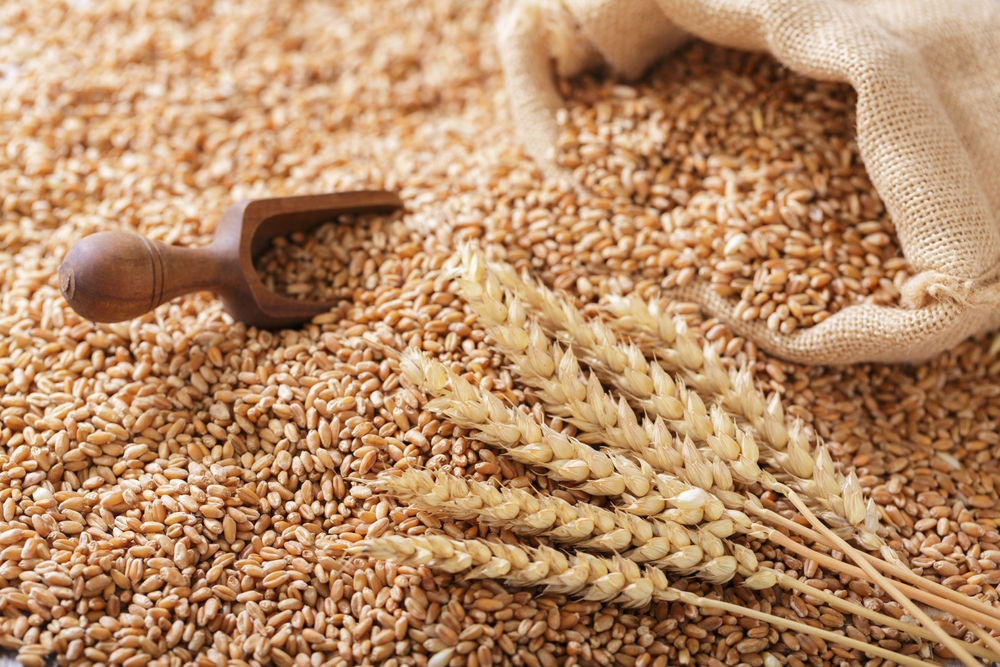Click to Skip Ahead
If your dog is allergic to proteins or struggles with inflammatory bowel disease, you’ve probably heard about hydrolyzed protein dog food. Meat is one of the most common allergens found in dog food, which often leads to itchiness and upset stomachs. The bodies of allergic dogs mistake the proteins as a threat and attack them, resulting in an allergic reaction.
However, these ingredients also provide your dog with complete proteins that contain amino acids that help their bodies function, provide them with energy, and keep them healthy, and are therefore a crucial part of their diet.
Hydrolyzed protein dog food is a great alternative food for dogs with certain health problems because it’s made with proteins that have undergone a process in which they’ve been broken down into tiny molecules that are too small to be identified by the immune system, and, therefore, no allergic reaction occurs.
How Does It Work?
As we mentioned above, hydrolyzed protein dog food doesn’t contain the full-form protein that is found in most dog food but rather tiny molecules of protein that are too small to be identified by the body. Thanks to science, the necessary protein your dog needs in their food can be hydrolyzed, which typically involves water and hydrochloric acid or proteolytic enzymes to break the protein peptide bonds apart to form single amino acids.
These two processes affect the breakdown of protein in a similar way that a dog’s digestive system would break protein down. The protein strands can be broken down into smaller strand sizes or completely isolated to individual amino acids. It’s a complex process, but it is approved by the FDA.
This type of dog food is necessary for dogs that can’t digest protein well, as the protein has already been broken down and their digestive system doesn’t have to do much work.
Novel Protein, Limited Ingredient, or Hydrolyzed Protein Dog Food?
Dogs with protein allergies are often allergic to chicken, lamb, beef, and fish because these are most commonly found in dog food. It’s unlikely for a dog to be triggered by these animal proteins at first, but after eating the same diet over time, they may develop signs, such as itchiness, hair loss, infections, vomiting, and diarrhea. This reaction can sometimes be eliminated by changing their dog food to one that contains novel protein instead of the protein they’ve always consumed.
Often, before starting on hydrolyzed protein dog food, dog owners will buy dog food with a novel protein, such as kangaroo, venison, alligator, ostrich, etc., but if their body still reacts poorly to these animal proteins, they’ll need something more radical.
A limited-ingredient recipe may be all your dog needs to overcome their symptoms as these recipes cut out common allergens found in dog food, but it may not be enough for your dog, and they may need to be transitioned onto hydrolyzed protein dog food to eliminate the threat.
Both limited-ingredient and novel protein dog food can be bought at pet stores or specialty retailer stores without a prescription, while hydrolyzed protein dog food can only be purchased with a prescription from your vet. You should discuss any illness and food changes with your vet beforehand.
If you need to speak with a vet but can’t get to one, head over to PangoVet. It’s an online service where you can talk to a vet online and get the personalized advice you need for your pet — all at an affordable price!
What Types of Dogs Do Best on Hydrolyzed Protein Dog Food?
Dogs with health issues that make digesting protein difficult will do best on hydrolyzed protein dog food. These conditions may be inflammatory bowel disease, food allergies, or pancreatic disease. Dogs with food allergies should have mild to no reactions, and dogs with bowel problems should experience less bloating, vomiting, and diarrhea.
Types of Hydrolyzed Protein Dog Foods
There are many hydrolyzed protein dog food options across a variety of brands that work with nutritionists and food scientists to achieve their formulas. It is not necessary to feed your dog hydrolyzed protein if they haven’t been diagnosed with food allergies or digestive problems, as standard high-quality dog food is nutritionally balanced and complete and will give your dog everything they need.
You also don’t need to feed your dog this type of food if their signs are mild or if they do well on novel proteins, limited-ingredient diets, or any other diet that meets their nutritional needs. However, hydrolyzed protein diets are excellent for dogs who require it, albeit more expensive and harder to get.

Royal Canin, Hill’s Science Diet, Purina, and several other brands cater to dogs with digestive issues. These recipes reduce reactions, such as skin itchiness, dull coat, and stomach upset due to the broken-down proteins. Most of them also include fibers and prebiotics to restore and maintain the gut with healthy bacteria.
Hydrolyzed protein dog food comes in two types: dry dog food and canned dog food.
- Royal Canin Veterinary Diet Adult Hydrolyzed Protein HP Dry Dog Food
- Purina Pro Plan Veterinary Diets HA Hydrolyzed Chicken Flavor Dry Dog Food
- Hill’s Prescription Diet z/d Skin/Food Sensitivities Original Flavor Dry Dog Food
- Blue Buffalo Natural Veterinary Diet HF Hydrolyzed for Food Intolerance Grain-Free Dry Dog Food
- Purina Pro Plan Veterinary Diets HA Hydrolyzed Chicken Flavor Wet Dog Food
- Blue Buffalo Natural Veterinary Diet HF Hydrolyzed for Food Intolerance Grain-Free Wet Dog Food
Advantages of Hydrolyzed Protein Dog Food
There are many advantages to hydrolyzed protein dog food. It can reduce the signs and discomfort your dog faces daily caused by food allergens, exocrine pancreatic insufficiency, and inflammatory bowel disease. Because hydrolyzed protein is already broken down, their bodies don’t have to work as hard to digest it, and it’s so small that the immune system doesn’t recognize it as a threat.
It’s a safe option for allergic dogs, and it not only reduces signs but can restore once itchy, dry, and dull skin and coats to a healthy and shiny condition.
Another advantage to this food is that it’s made under strict conditions to prevent unwanted ingredients from contaminating the specialized food. By avoiding cross-contamination, you can easily pinpoint what causes your dog’s allergic reactions and get answers faster.

Disadvantages of Hydrolyzed Protein Dog Food
Of course, nothing is perfect, and hydrolyzed protein dog food comes with a few disadvantages. The first is the price. Because of the extensive process and strict quality control this type of food undergoes, it is very expensive and costs more than many premium dog foods on the market. How long your dog may need to stay on the food is unknown and may ultimately become a bigger expense than you anticipated.
Unfortunately, some dogs still experience flare-ups on this specialized food. What works for someone else’s dog may not work as well for yours. Your dog may also refuse to eat it, and you’ll lose a lot of money and still have your dog’s condition to worry about. Some manufacturers offer a money-back guarantee if your dog will not eat their food.
Hydrolyzed protein is bitter, and dog foods often contain artificial flavors to make them more appealing—but artificial flavors can cause allergies in some dogs.
And lastly, you need a prescription to be able to purchase the most hydrolyzed protein dog food, which requires a trip to your vet, which is an extra financial and time investment.
Frequently Asked Questions (FAQ)
How Long Can My Dog Be on Hydrolyzed Protein Dog Food?
Your dog will be on the food for a minimum of 6–12 weeks until their signs subside. After this period, you can start to introduce one protein source to their food. If they react to it, you know they’re allergic to that type of protein. This process can take time, but it’s important to work with your vet and follow their treatment advice when your dog is on this specialized food. It is an elimination diet that identifies which types of ingredients your dog is allergic to and that can rule out environmental factors, as the signs often mimic each other.
Can I Make It at Home?
Hydrolyzed protein dog food is expensive, and wondering whether you can make it yourself at home is a reasonable question. But the food is so expensive for a reason, and that’s because it undergoes a special process and must be made in the lab by professionals using the correct chemicals and equipment. It’s also made under strict conditions to avoid cross-contamination. Therefore, it cannot be made at home.

What Can I Feed My Dog Instead of Hydrolyzed Protein Dog Food?
As we’ve mentioned above, alternatives to hydrolyzed protein dog food would be diets consisting of limited ingredients or using novel proteins instead of the common ones. However, these alternatives are not a direct replacement and aren’t always effective.
Some companies have started using insects as their protein source, as it’s unlikely that dogs will be allergic to them. The black soldier flies and mealworms are most commonly used. Others believe that plant protein is the way to combat allergies in dogs, using tree nuts, edible seeds, and peanuts instead of meat. However, it’s important to chat with your vet before switching your dog to uncommon formulas.
Wrapping Up
If your dog has digestive problems or food allergies, your vet may consider hydrolyzed protein dog food. This food contains proteins that have been broken down through the process of hydrolysis and are no longer seen as a threat to your dog’s immune system. You’ll need a prescription from your vet to purchase the food and will need to follow their feeding guidelines and treatment advice. Thankfully, there are various types of this food to choose from, and you’re likely to see great improvements in your dog from it.
Featured Image Credit: Pixel-Shot, Shutterstock












